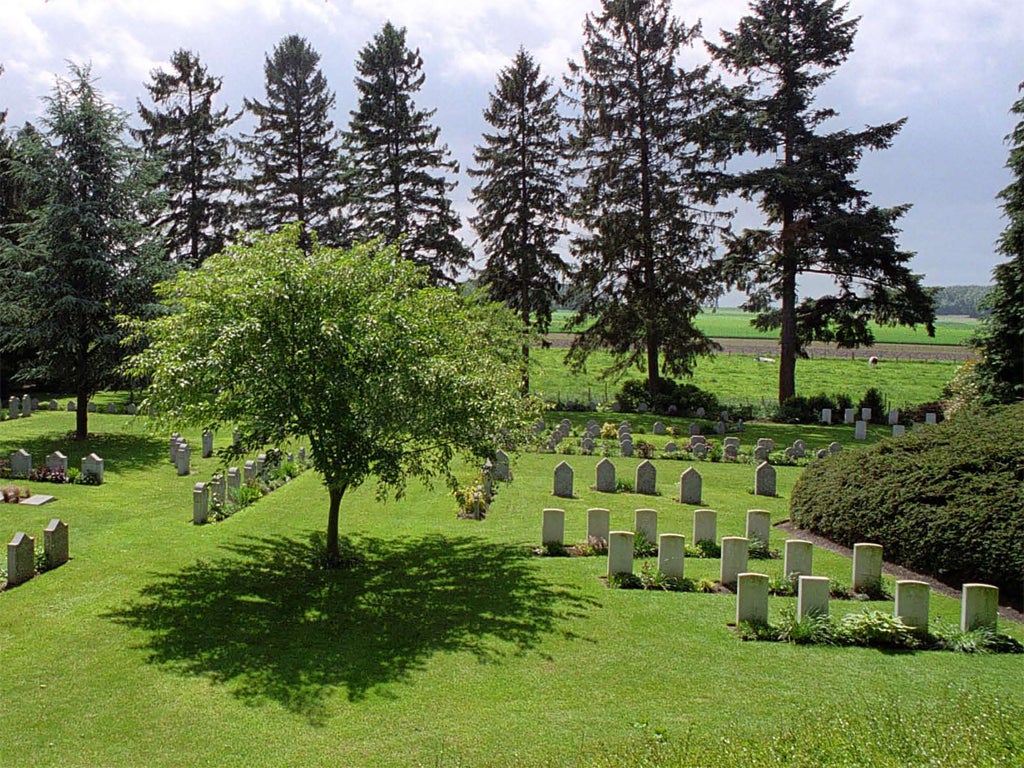Mons: Relics and remembrance
Mons combines modern vitality with nods to its sombre past. By Emily Reynolds

Today it is difficult to imagine the wonderfully pretty town of Mons as the backdrop to one of the fiercest battles the British fought during the First World War. It radiates picturesque appeal, with a gorgeous Grand Place; a fabulous, 15th-century gothic town hall; a tangle of lanes lined with enticing little shops; and a beautiful belfry whose mellow-sounding carillon rings out every quarter hour.
There's much contemporary vitality too. A large student population ensures a lively bar scene, while the town as a whole is gearing up for its role as European Capital of Culture in 2015 (shared with Plzen in the Czech Republic). Yet tradition is also a matter of some passion here: the entire town stops to celebrate the festival of La Ducasse every year. Set over the weekend of Trinity Sunday, this is an immensely colourful series of events starting with a solemn procession when the relics of St Waudru are paraded through town and ending with a riotous battle in the Grand Place between St George and a huge papier-mâché dragon. The people of Mons hold that their affinity with St George gave rise to a special bond with the British even before the First World War.
Mons is spread over a hill, around which British and German forces confronted each other on 23 August 1914. The Germans had not expected the British troops to be there; the British had not anticipated the strength and size of the German army, and were outnumbered three to one.
Despite inflicting heavy losses on their enemy, the British started retreating that evening. It was a battle for which the first Victoria Crosses of the war were awarded – to Lieutenant Maurice Dease (aged 24) who died after protecting Nimy bridge under intensive fire, and to Private Sidney Godley (25) who took over from Dease, single-handedly covering his section's retreat. He was captured by the Germans and learned of his award in Delotz prisoner-of-war camp.
To explore the battlefield area, head first to the Tourist Office ( monsregion.be) on the Grand Place. Here you can pick up an excellent free guide to the major sites of the conflict. You'll need a car or a bicycle, with the latter hireable from the railway station ( maisondescyclistes.be). Alternatively, contact the tourist office in advance to arrange a half-day guided tour.
There are 10 sites to visit, each marked with a commemorative plaque. Most significant are the railway bridge over the Mons-Condé Canal where Dease and Godley showed such valour; the spot on the Casteau-Soignies road where Drummer Edward Thomas fired the first British shot of the First World War (in neat symmetry a plaque on the other side of the road marks where the Canadian 116th Battalion stopped on their way to liberate Mons on 11 November 1918); and the serene cemetery of St Symphorien, tucked away down a narrow lane outside the village of the same name.
This is an extraordinary graveyard, not only for its tranquillity and stunning setting, but also because both German and Allied troops lie buried here. That was thanks to the landowner, Jean Houzeau de Lehaie, who allowed the Germans to use this site on the strict proviso that they agreed to give a dignified burial to the British dead as well. Lieutenant Dease is buried here, not far from George Ellison and Gordon Price who were killed on the outskirts of Mons on 11 November 1918. Ellison and Price are thought to have been the last casualties of the First World War.
Back in the centre of Mons, a new museum of war (and peace) is taking shape and will be housed in La Machine à Eau, a handsome 19th-century building that, until 1961, supplied Mons with its drinking water. The permanent collection will include much of the town's impressive archive from the First World War – uniforms, drums, medals, photographs, letters and more. The museum is due to open in time for the start of the city's year as European Capital of Culture.
War stories
On the night of 23 August 1914, British forces in retreat from Mons became gravely at risk of being encircled by German troops. Just before midnight, the dark sky is said to have suddenly filled with light, and angel-archers appeared. They rained down arrows on the German troops, allowing the British to get away in safety. Hallucination? A meteorite shower? Mass hysteria? Whatever happened, the phenomenon of the Angels of Mons became legend – and great propaganda for the British.
Staying there
St James Hotel (00 32 6572 4824; hotelstjames.be) at 8 Place de Flandre offers 21 sleekly furnished bedrooms and four apartments in a fine, 18th-century building. Double rooms start from €83, room only.
Eating there
For bars and nightlife, the most happening square is Marché aux Herbes – make for the Quartier Latin at number 27 and order a St Feuillien beer brewed nearby at Le Roeulx. Among the plentiful restaurant options in Mons is iCook (00 32 6333 4033; traiteur icook.com) at 2 Rue Notre Dame for local specialities – with a gourmet twist. Or for a happy mix of good value and style, make tracks to La Table du Boucher (00 32 6531 6838; lucbroutard.be) at 49 Rue d'Havré.
Join our commenting forum
Join thought-provoking conversations, follow other Independent readers and see their replies
Comments
Bookmark popover
Removed from bookmarks